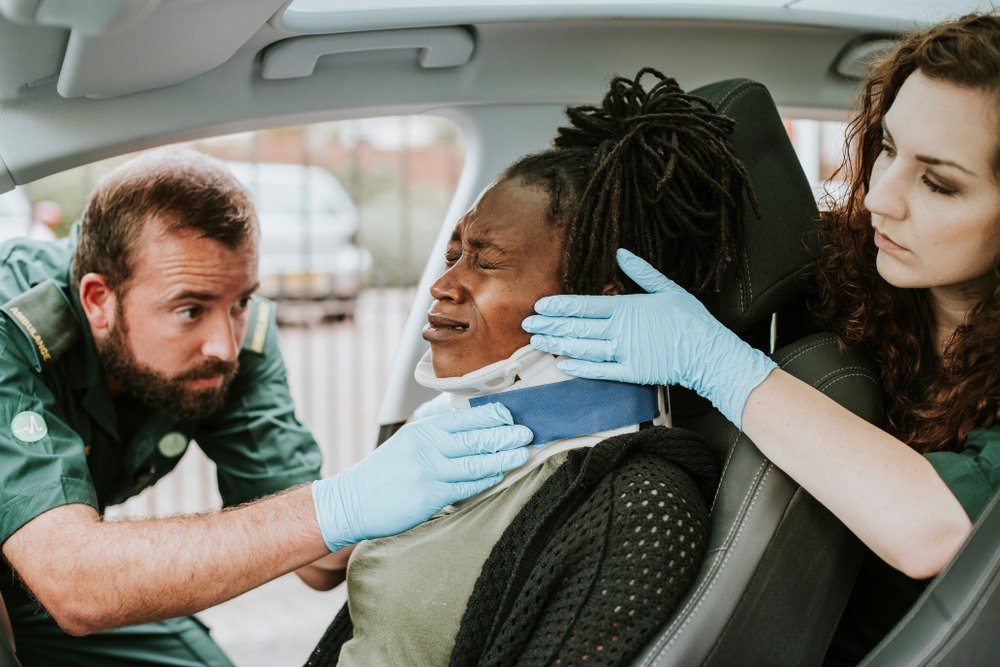Strangulated hiatal hernia: symptoms, treatments, and complications
A strangulated hernia is a severe medical problem that can be fatal. A vulnerable abdominal muscle region is penetrated by fatty tissue or a segment of the small intestine. Heartburn, throat irritation, abdominal discomfort, belching, and regurgitation are some signs of a hiatal hernia, commonly referred to as a stomach hernia. Yet, up to 90% of those with stomach hernias won’t exhibit any symptoms.
Although they might be uncomfortable, hiatal hernia symptoms are typically not dangerous. This blog explains the symptoms of strangulated hiatal hernia, their treatments, and what complications can occur if strangulated hiatal hernia is left untreated.
You can book a consultation with a gastroenterologist in Kolkata through the Credihealth website if you have strangulated hiatal hernia or are facing the following symptoms.
What are the symptoms of strangulated hiatal hernia?
Small hiatal hernias typically do not manifest any symptoms. A more significant hiatal hernia can alter the structures and systems that keep food and acids where they belong.
This may result in signs and symptoms include,
- Rapid onset of severe acute pain.
- The skin above the hernia becomes darker or redder.
- Around the hernia, there may be swelling or pain.
- bloody stools
- constipation
- Belching or hiccupping shortly after eating
- Heartburn
- fatigue
- fever
- inability to pass gas
- Bad breath
- nausea
- vomiting
- A stinging sensation in the throat
- Regurgitation
- increased heart rate
- having a sour or unpleasant aftertaste
The lower esophageal sphincter, a muscle valve, may shift in position due to a hiatal hernia (LES). This permits the stomach’s contents to reflux into the esophagus, which might result in discomfort.
Typically speaking, a hernia only becomes problematic when it enlarges. The symptoms will worsen if the LES weakens, which can happen as we age.
How is strangulated hiatal hernia treated?
The diagnosis of strangulated hernias is frequently made in the emergency room and maybe straightforward based on a visual examination and the description of symptoms. To determine whether a hernia obstructs a patient’s bowels, doctors may do an imaging examination, such as an ultrasound.
A strangulated hernia should be surgically repaired immediately to avoid catastrophic bodily injury and long-term tissue damage.
Surgery-
A strangulated hernia requires two stages of surgery.
The surgeon must first minimize the hernia’s size. The surgeon gently presses on the hernia to force the herniated tissues back into the abdominal cavity. To avoid permanently damaging the tissue, they must act immediately.
The surgeon will next remove any damaged tissues after this.
The surgeon will then fix the weak muscle where the hernia poked through once this is finished. The surgeon might be able to repair this using stitches if the hernia is modest. A surgeon might have to add bendable surgical mesh or tissue for additional support when treating giant hernias to prevent the hernia from reoccurring.
What complications can occur if the strangulated hiatal hernia is not treated?
A sliding hiatal hernia and a para esophageal hernia are the two main varieties of hiatal hernia. While para esophageal hernias are potentially more dangerous and linked to consequences, sliding hernias are the most frequent, making up about 95% of all diagnoses.
It would be better if you have a basic understanding of what a hernia is to comprehend the potential issues that could arise with one:
- The gastroesophageal junction, also known as the gastroesophageal junction, will protrude through the hiatus, a hole in the diaphragm, in the event of a sliding hiatal hernia. The esophagus travels through this opening. Since the herniated stomach section can slide in and out of your chest cavity while you swallow, the term “sliding” was coined.
- A para esophageal hernia causes the abdomen to protrude into the chest. While many para esophageal hernias develop from sliding hernias, others might happen unexpectedly if the diaphragm has a structural weakness.
Unlike a sliding hernia, a para esophageal hernia does not quickly move in and out of the hiatus. Instead, it may get bigger and enter the chest cavity even more profoundly as time passes. The problems may now be severe and, in some rare instances, even life-threatening.
Possible complications can include:
- Compression of the esophagus
The hernia might cause the esophageal wall to compress as it rubs up against it. This might result in food becoming lodged in the esophagus, which can cause chest pain after eating and trouble swallowing (dysphagia).
Even though esophageal compression is not a medical emergency, it may necessitate medicine to treat or stop symptoms from worsening.
- Incarcerated Hiatal Hernia
Incarceration happens when the stomach’s ruptured section gets wedged in the hiatus. The primary sign of incarceration in some people is long-lasting but minor chest pressure when food moves through the upper digestive tract. Yet, it might restrict or hinder blood flow.
Unless there is a severe impediment, incarceration is not a medical emergency in and of itself.
- Volvulus
Volvulus is a severe gastric blockage brought on by a herniated stomach that has twisted over 180 degrees. Although it is extremely rare, it can also happen without a hiatal hernia.
Some signs could be Difficulty swallowing, Chest pain after eating, Belching, Vomiting, etc. If this issue worsens, it may result in gastric bleeding, upper abdominal pain, distention, vomiting that results in unproductive retching, and upper abdominal pain (due to the abnormally increased blood pressure).
Acute symptomatic volvulus typically affects adults over 50 and is regarded as a medical emergency because there is a 30% to 50% chance of death.
- Strangulation
The blood flow to the stomach is severed during strangulation due to volvulus or confinement. These signs include:
- A sudden, sharp chest pain
- Fever
- Fatigue
- Bloating
- Vomiting
- An inability to pass gas
- Constipation
- Warmth or redness over the herniation
- Rapid heart rate
- Bloody or tarry stools
This is a medical emergency because the blockage may cause immediate organ damage. Strangulation can cause gangrene, shock, and death if left untreated.
- Intrathoracic Stomach
An uncommon disorder known as an intrathoracic stomach causes the stomach to enter the chest cavity completely. Although not all cases result in symptoms, the most typical warning indications are dyspnea (breathlessness), a sense of pressure, and fullness in the chest.
Other signs can include:
- Vomiting
- Retching
- Difficulty swallowing
- Gastrointestinal bleeding
- Food that is coughed up into the lungs can cause aspiration pneumonia.
Other organs, such as the pancreas, liver, or colon, may slide into the chest cavity due to the more significant hiatal gap. The only way to address this uncommon but significant problem is through surgery.
Conclusion-
Hiatal or stomach hernias are frequent, particularly in people over 50. Chest pain, throat irritation, belching, and regurgitation are typical symptoms. For those who have experienced a strangulated hernia, the outlook is favorable with appropriate treatment. Treatment should start as soon as feasible; that is crucial.
We have mentioned the symptoms of strangulated hiatal hernia in this blog. Make sure you go through them and consult a gastroenterologist in Kolkata through the Credihealth website immediately if you face any of these symptoms.
Being proactive may also help you avoid developing a strangulated hernia. If you think you could have a hernia, get help. Your chance of the hernia being strangled may be lower as a result.




